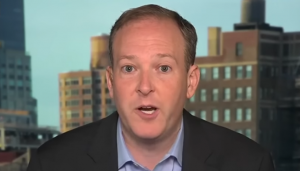Wall Street stocks fell in morning trading on Wednesday
and bond yields surged as investors try to predict how quickly the Federal
Reserve will reduce its support for the economy and shift to fighting inflation.
Also Read | US Premarket: Twitter, Spirit Airlines and other stocks making biggest moves
The S&P 500 fell 1.37% to 4,463.64 as of 11:13 am
Eastern Time Zone. The Dow Jones Industrial Average fell 289.72 points, or
0.84%, to 34,351.46. The Nasdaq fell 350.64 points or 2.47% to 13,853.84.
Technology companies saw some of the biggest losses, which
weighed heavily on the broader market. Apple slid 2% and Microsoft fell 2.7%.
Also Read | Israel government loses majority as religious lawmaker quits
Retailers and communications companies and others that
depend on direct consumer spending also tumbled. Amazon fell 3.1% and Facebook
parent Meta slipped 3.3%.
Bond yields surged sharply again. The yield on the
10-year Treasury rose to 2.61% from 2.54%.
Also Read | What is China’s debt-trap diplomacy: Communist ploy or West’s lie?
The recent movement in the bond and stock markets was
prompted by comments on Tuesday by a Federal Reserve governor that raised
expectations for a more aggressive approach by the central bank to help tame
surging inflation. Fed has already begun raising its benchmark interest rate
and is expected to continue raising it throughout the year.
Also Read | Russian President Vladimir Putin’s daughters likely to face EU sanctions
The Fed’s minutes from its latest policy meeting will be
closely watched by investors for clues about the next steps. Traders expect the
Fed to raise its key overnight rate by half a percentage point at its next
meeting in May. That’s twice the usual amount and something the Fed hasn’t done
since 2000.
The highest inflation in four decades threatens to crimp
economic growth. Rising prices on everything from food to clothing have
increased concerns that consumers will eventually pull back on spending.
Russia’s attack on Ukraine has added to those concerns pushing energy and
commodity prices even higher.
Also Read | ‘Sold everything to China’: Why are Sri Lankan traders mad at Rajapaksas
Crude oil prices were comparatively stable on Wednesday,
but are nearly 35% higher for the year. That has led to a rise in gasoline
prices and putting more pressure on shipping costs, prices for goods and
consumers’ pockets.






